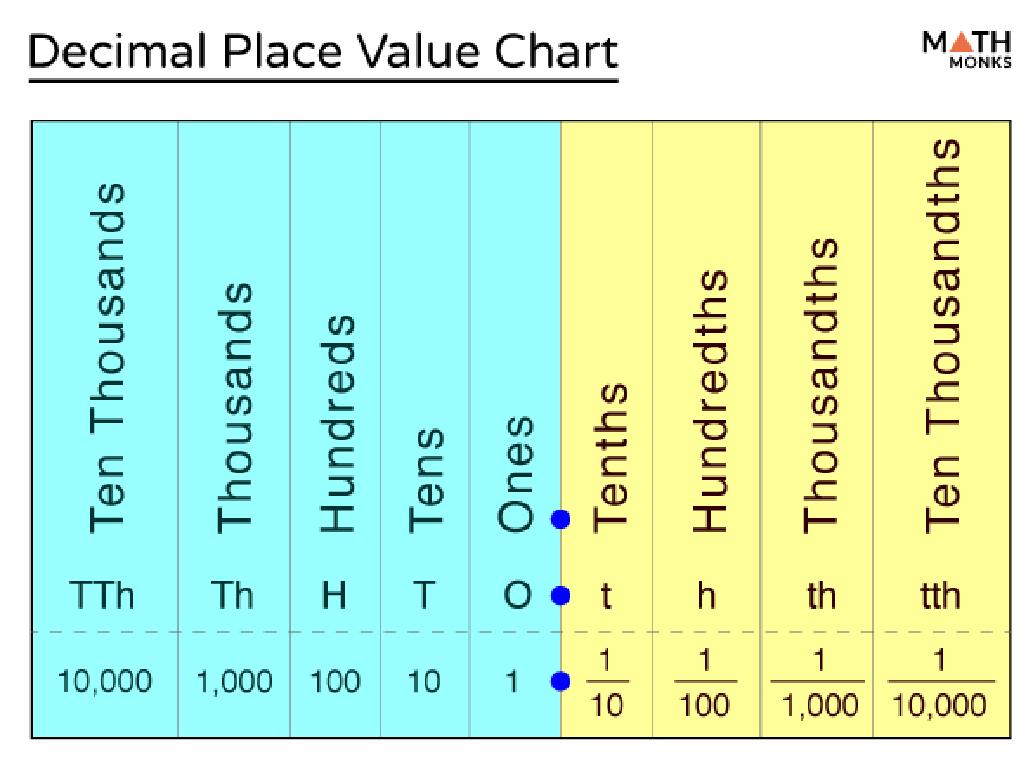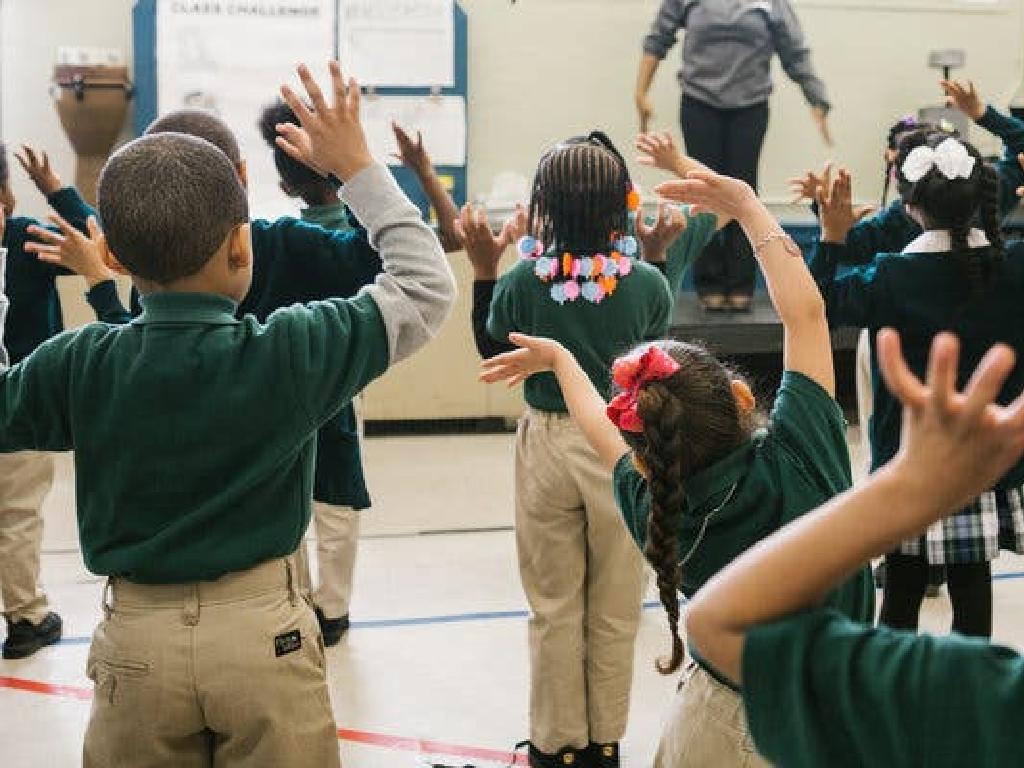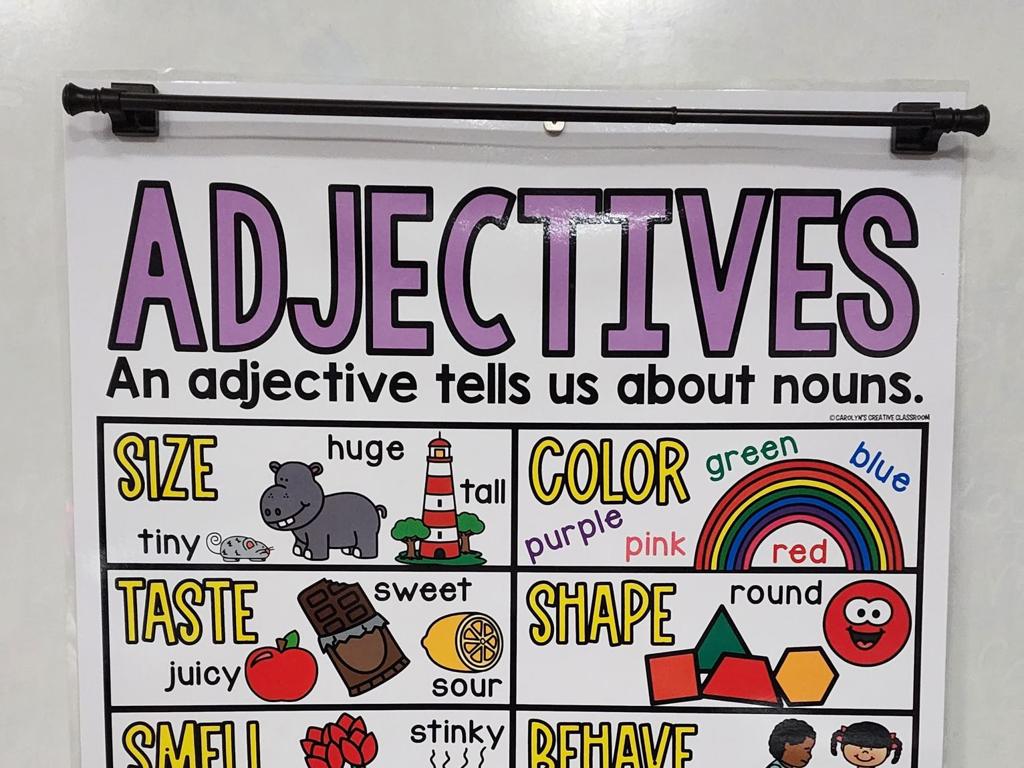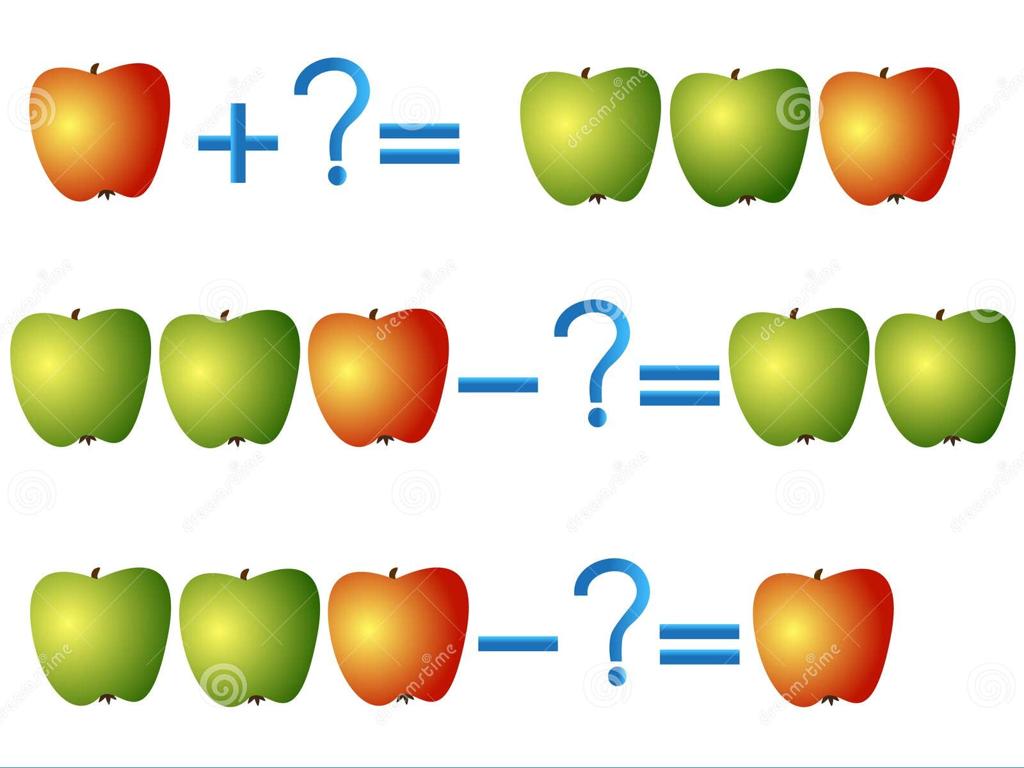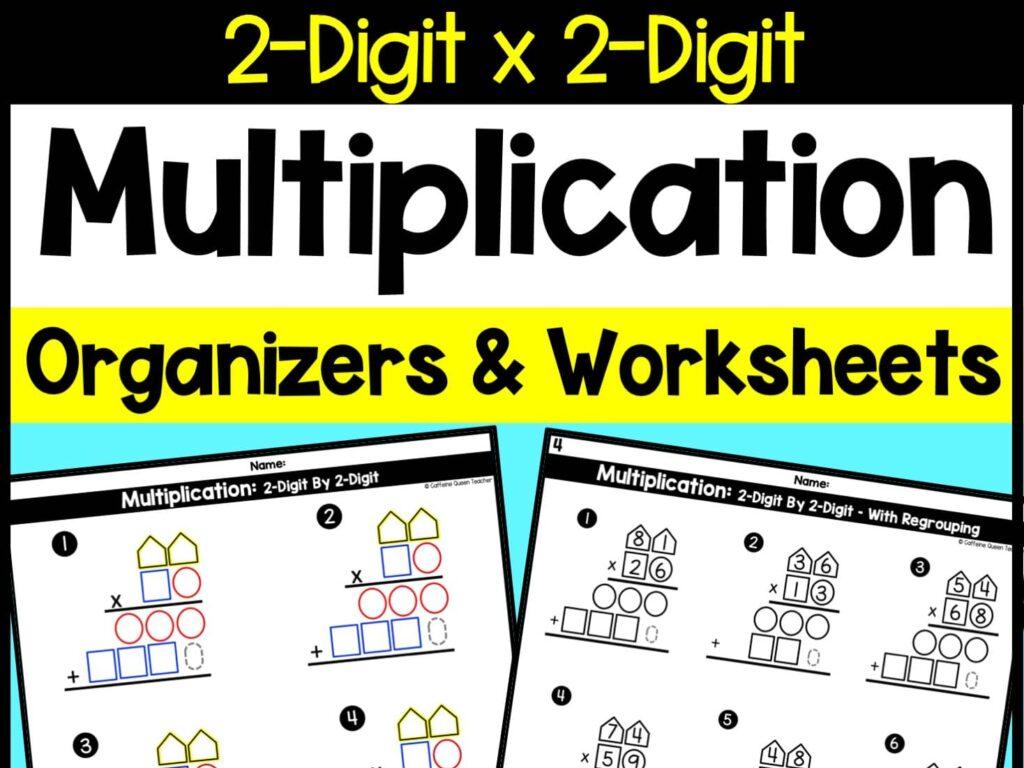Build Cube Trains To Solve Addition Word Problems - Sums Up To 10
Subject: Math
Grade: Kindergarten
Topic: Addition Word Problems Up To 10
Please LOG IN to download the presentation. Access is available to registered users only.
View More Content
Welcome to Addition!
– Become addition experts today
– Learn to add numbers up to 10
– Use cube trains for addition
– Cube trains are blocks connected to represent numbers
– Practice with fun activities
– We’ll build and count cubes to find sums
|
This slide introduces the concept of addition to Kindergarten students. The goal is to make them comfortable with adding numbers up to 10 using a hands-on approach. Cube trains, which are a series of connected blocks, will be used as a visual and tactile aid to help students understand the concept of addition. As they connect cubes to form trains, they will be able to physically see the numbers getting larger and grasp the idea of ‘adding’ more to a group. Encourage the students to use different colored cubes for each number to visually distinguish the sets being added. Possible activities include: building cube trains to match number cards, combining cube trains to see the total, and solving simple addition word problems with cube trains.
Learning Addition: Building Cube Trains
– Addition means joining together
– Example with apples: 2 + 3
– Starting with 2 apples, add 3 more, now there are 5!
– Use fingers or objects to add
– Count on fingers, or group items like blocks to find sums
– Let’s build cube trains for adding
– Cube trains will help us visualize addition problems
|
This slide introduces the concept of addition to Kindergarten students by relating it to simple real-life scenarios, such as combining apples. It’s important to use tangible examples that children can see and touch, making the abstract concept of addition more concrete. Encourage the use of fingers or classroom objects to practice adding up to 10. Introduce cube trains as a fun, interactive way to visualize and solve addition problems. For the activity, provide different sets of cube trains for students to build and calculate sums, ensuring they understand the concept of putting together numbers to reach a total. Have them work in pairs to create trains that add up to 10, and share their trains with the class.
Meet the Cube Trains
– Cube trains are block buddies
– Each cube is one number
– Count cubes for total number
– If we have a train with 3 cubes and another with 2, count all cubes to find the total.
– Adding with cube trains is fun
– Example: A 4-cube train joins a 3-cube train, making a 7-cube long train!
|
Introduce cube trains as a fun and tangible way for students to understand addition. Explain that each cube represents a single unit, just like the number 1. Show them how to count each cube to find the total, which helps them visualize the concept of addition. Use simple language and ensure that the examples do not exceed sums of 10, as this is the focus for Kindergarten level. During the activity, encourage students to physically build cube trains and count them to solve addition problems. Provide several examples and allow the students to practice with their own cube trains, fostering a hands-on learning experience.
Building Cube Trains: Addition Fun!
– Build your own cube train
– Stack cubes to make a train
– Use colors for numbers
– Each color represents a number
– Add cubes up to 10
– Count carefully, don’t go over 10
– Show your cube train
|
This slide introduces a hands-on activity for Kindergarten students to understand addition through a visual and tactile method. Provide students with a variety of colored cubes and instruct them to build ‘cube trains’ where each cube represents one unit. Encourage them to use different colors to represent different addends in an addition problem. For example, a red cube plus a blue cube equals a purple cube train. The activity should be kept simple with sums not exceeding 10. This will help them visually grasp the concept of addition. After building, students can present their cube trains to the class, explaining their addition problem and solution. Prepare to assist students who may struggle with counting and provide additional guidance to ensure they understand the concept of adding up to 10.
Solving Addition Word Problems with Cube Trains
– Word problems are number stories
– Cube trains help us find answers
– Imagine stacking blocks to add numbers
– Let’s solve a problem together
– Example: 2 blue cubes + 3 red cubes = ?
– Practice makes perfect
|
This slide introduces the concept of using cube trains as a visual and tactile method to solve addition word problems, which is particularly effective for Kindergarten students. Start by explaining that word problems are like stories that involve numbers, where we can find the answer by adding those numbers together. Demonstrate with a simple example, such as combining blue and red cubes to find the total. Encourage the students to participate by solving the example problem as a class. Provide additional simple word problems for them to practice with cube trains, ensuring they understand the concept of addition as combining two groups of items to find the total sum.
Let’s Solve Together: Adding Cube Trains
– Start with a 4-cube train
– Add a 3-cube train to it
– Count all cubes in the new train
– Use your fingers or objects to count
– Discover the total number of cubes
– 4 cubes plus 3 cubes equals how many?
|
This slide is an interactive class activity designed to help Kindergarten students understand addition through a hands-on approach using cube trains. Start by showing the students a physical or pictorial representation of a train made up of 4 cubes. Then, introduce another train consisting of 3 cubes. Ask the students to combine the two trains and count the total number of cubes in the new, longer train. This visual and tactile method helps solidify the concept of addition. Encourage the students to count aloud together and confirm the sum of 7 cubes. Possible variations of the activity could include using different numbers of cubes or asking students to form trains with their own set of cubes and then combine them with a neighbor’s train.
Practice Time: Building Cube Trains
– Build your own cube trains
– Solve addition problems with cubes
– Use cubes to add numbers up to 10
– Partner up and compare trains
– Take turns to build and solve
– Share your answers with the class
– Discuss how you got your answers
|
This slide is designed for a hands-on activity where students will apply their understanding of addition by using physical cube trains to solve problems. Provide each student with a set of cubes and ensure they understand the task is to create trains that represent addition problems with sums up to 10. Encourage them to work with a partner to foster collaboration and communication skills. After solving the problems, they should compare their cube trains and discuss their methods and results. This activity will help solidify their understanding of addition and also allow for peer learning. Possible variations of the activity could include creating specific addition problems for them to solve, challenging them to find all possible trains for a given sum, or having a ‘gallery walk’ where they can see each other’s solutions.
Class Activity: Building Cube Trains
– Pair up and build cube trains
– Solve addition problems together
– Use cubes to represent numbers in problems
– Ensure trains sum up to 10 or less
– Share solutions with the class
– Discuss different ways to reach the sum
|
This activity is designed to encourage collaborative learning and hands-on experience with addition. Students will work in pairs to physically build trains using cubes, with each cube representing a unit. They will then use these trains to solve addition problems, ensuring that the total does not exceed 10. This visual and tactile method helps solidify the concept of addition. As a teacher, facilitate the pairing, oversee the activity to ensure understanding, and guide students to help each other. After the activity, have each pair share their cube trains and explain their thought process. Possible variations of the activity could include using different colored cubes for different numbers, creating specific addition problems for each pair, or challenging students to find all possible combinations that add up to 10.
Congratulations, Addition Explorers!
– Excellent work with cube trains
– Addition combines numbers for a total
– Like 2 cubes plus 3 cubes makes 5 cubes
– Practice makes perfect
– Try with different numbers up to 10
– You’re on your way to be addition stars!
|
This slide is meant to celebrate the students’ achievements in using cube trains to solve addition problems. It reinforces the concept that addition is a way to combine numbers to find a total sum. Encourage the students to continue practicing with different numbers up to 10 to become confident in their addition skills. As a follow-up activity, you can have students create their own addition word problems using cube trains or have them partner up to solve each other’s problems. This will help solidify their understanding and make them feel like ‘addition stars’.
Show and Tell: Cube Train Creations
– Present your cube train
– Explain your building process
– Describe how you solved the problem
– Applaud your classmates’ efforts
|
This slide is for a class activity where students will present their cube trains that they have built as a way to solve addition problems. Each student will take turns showing their cube train to the class, explaining the steps they took to build it, and describing how they used it to solve an addition problem with sums up to 10. After each presentation, the class will give a round of applause to show encouragement and appreciation for their peers’ hard work. For the teacher: Prepare a variety of addition word problems for the students to choose from. Ensure that each student understands the task and has enough cubes to build their train. During the presentations, guide the students to articulate their thought process and how they used the cube train to find the solution. Encourage active listening and positive feedback among students.

